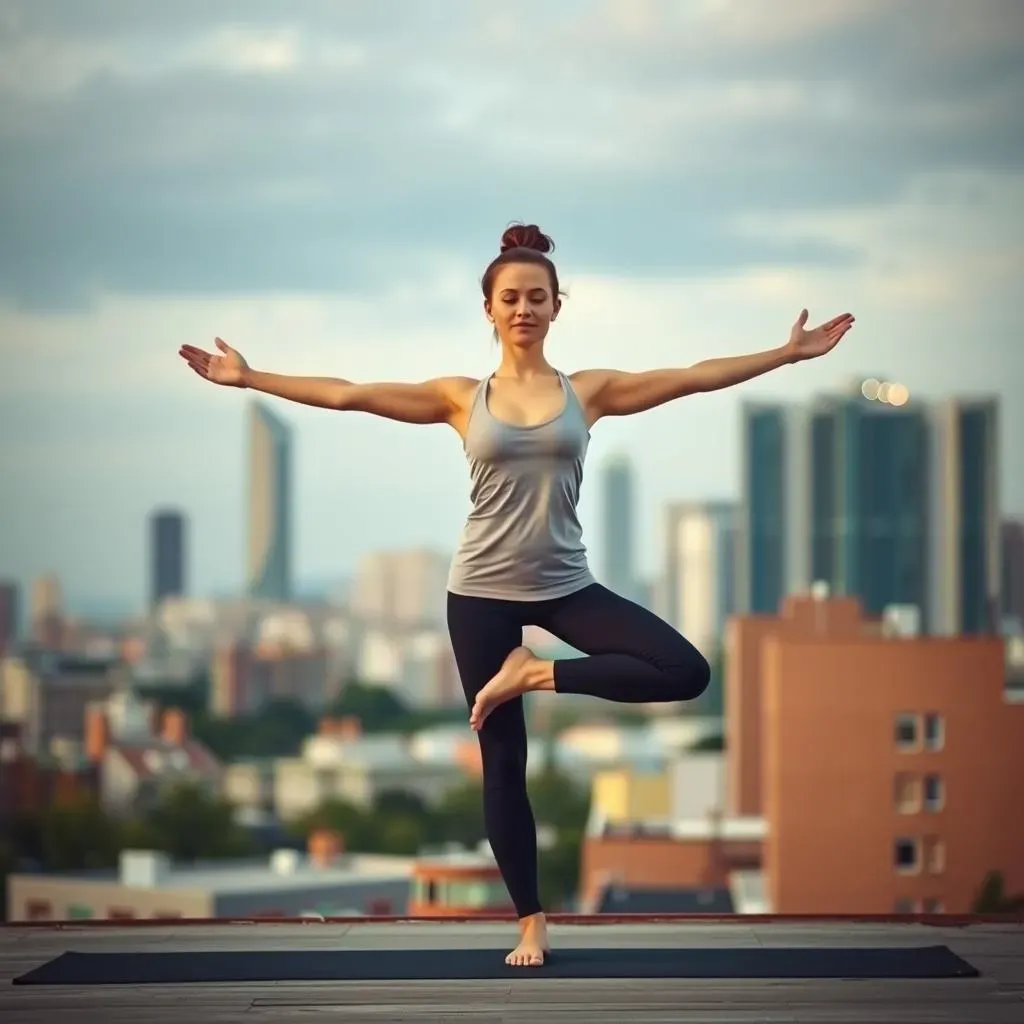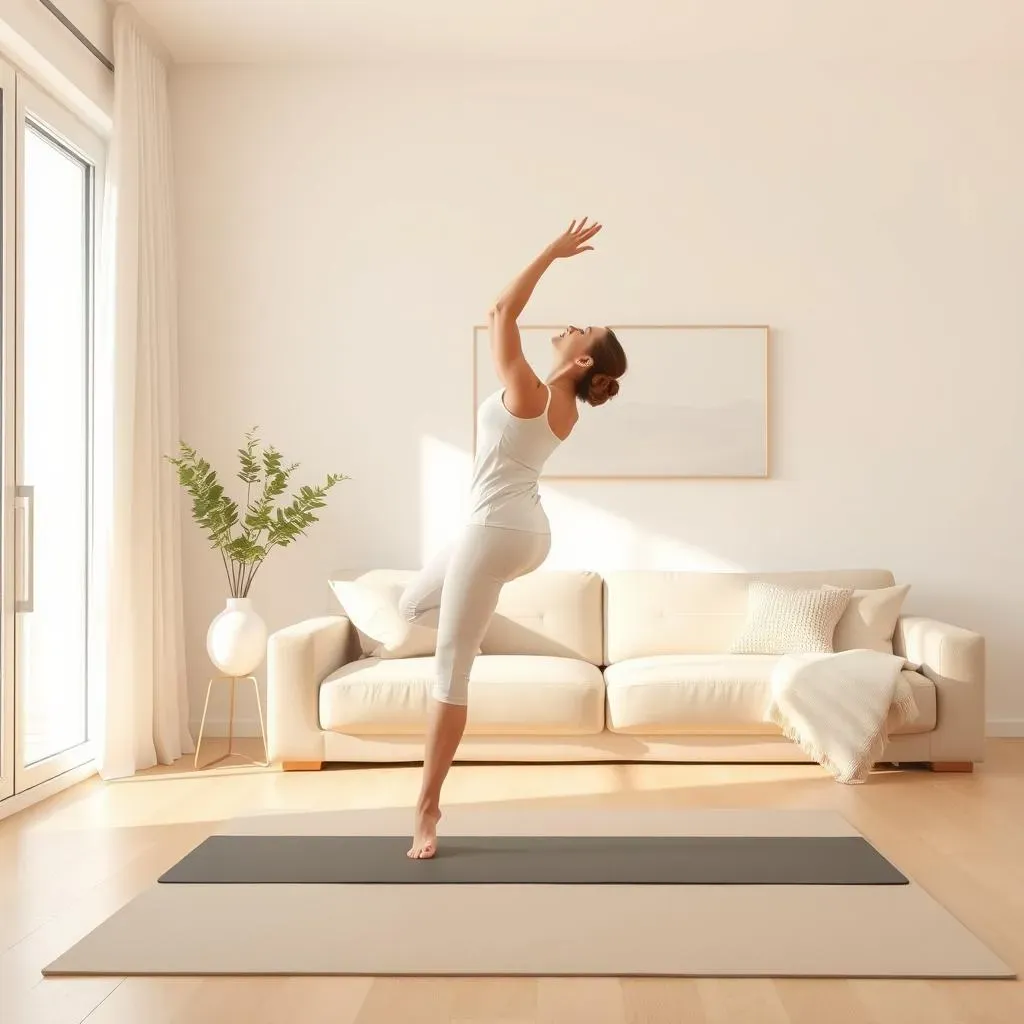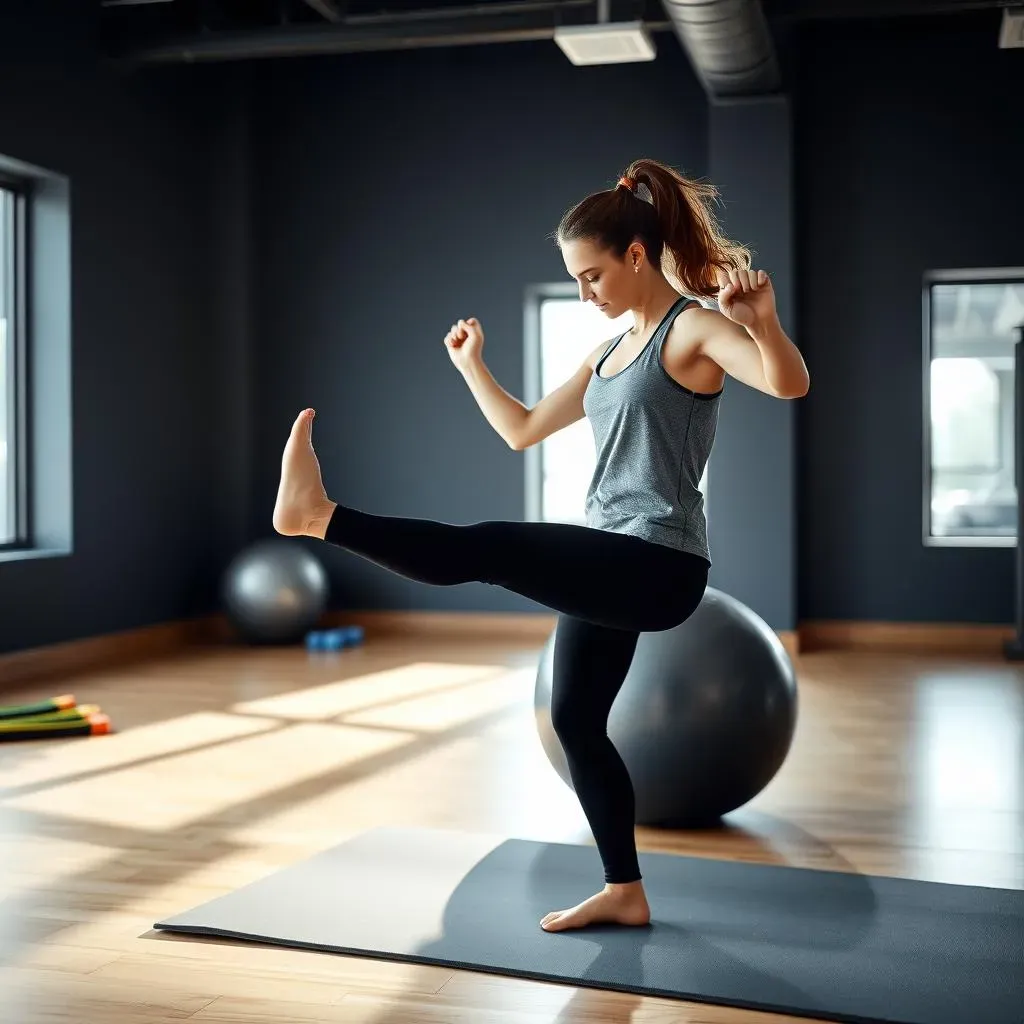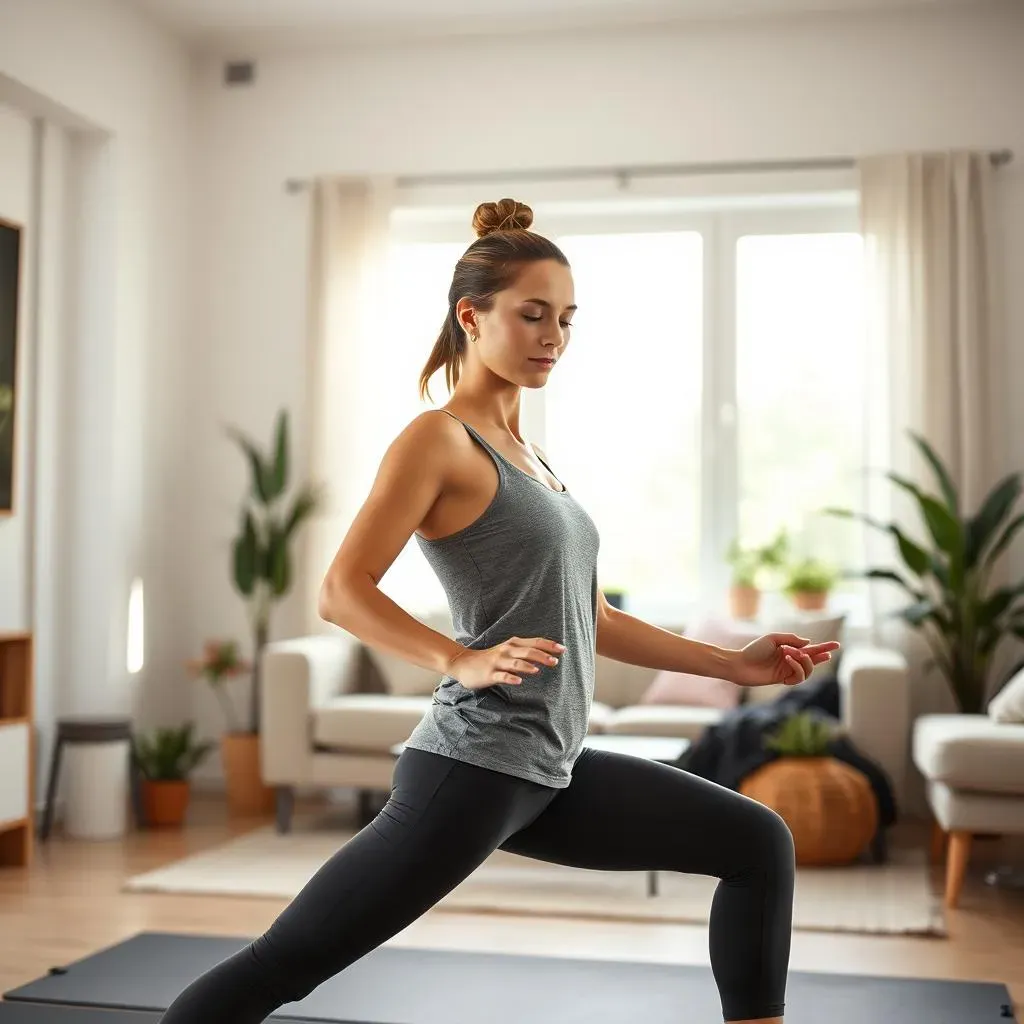Table of Contents
Feeling wobbly? Wish you had better balance? You're not alone! Many people struggle with balance, but the good news is that you can improve it – and you don't need a fancy gym. This article is your guide to a fantastic "pilates workout at home for balance." We'll explore how Pilates, a gentle yet powerful exercise system, can help you feel steadier on your feet. First, we'll look at the connection between balance and core strength – the foundation of Pilates. Then, we'll dive into a series of easy-to-follow exercises you can do right in your living room, no special equipment needed! We'll start with beginner-friendly moves and gradually progress to more challenging exercises as you build strength and confidence. By the end, you'll have a personalized Pilates routine to improve your balance, boost your core strength, and feel more confident in your everyday movements. Ready to find your center and improve your balance? Let's get started!
Understanding Balance and Pilates

Understanding Balance and Pilates
What is Balance, Anyway?
Think of balance as a complex dance between your body and gravity. It's not just about standing still; it's about your ability to shift weight, adjust to unexpected movements, and maintain control. Your inner ear, eyes, and muscles all work together to keep you upright. A strong core is crucial because it acts like the anchor for all these systems, helping to stabilize your body and prevent falls. Improving your balance can significantly improve your overall quality of life, making everyday tasks easier and reducing your risk of injury.
Maintaining good balance is especially important as we age. As we get older, our muscles can weaken, our reflexes slow down, and our sense of balance may decline. This makes us more prone to falls, which can have serious consequences. That's where Pilates comes in! It’s a fantastic way to improve balance and coordination, no matter your age. For seniors, Pilates can be a game changer, helping them stay active and independent for longer. Check out our Pilates for Seniors guide for more.
- Improved posture
- Reduced risk of falls
- Increased confidence in movement
The Pilates Method: Core Strength is Key
Pilates is more than just a workout; it's a mind-body practice that focuses on controlled movements, precise alignment, and deep breathing. It’s all about strengthening your core – those deep abdominal and back muscles that act as your body's natural support system. A strong core is the key to good balance because it provides stability and control for your entire body. Pilates exercises challenge your core muscles in a way that improves your body awareness and coordination.
One of the beautiful things about Pilates is its adaptability. You can modify exercises to suit your fitness level, making it accessible to everyone, from beginners to seasoned athletes. Whether you’re looking to improve your balance for everyday life or to enhance your performance in other activities, Pilates can help. It’s incredibly versatile! For example, if you want to focus on leg strength to support your balance, you might find our Pilates for Legs routine helpful.
Pilates and Balance: A Powerful Partnership
The connection between Pilates and balance is undeniable. By strengthening your core and improving your body awareness, Pilates directly addresses the fundamental elements of balance. Pilates exercises often involve standing on one leg, holding challenging postures, and making subtle shifts in weight. These actions challenge your balance, forcing your body to work harder to maintain stability. Over time, this leads to significant improvements in your overall balance and coordination.
Many Pilates exercises incorporate controlled movements that simultaneously challenge and improve balance and coordination. This makes it incredibly effective for improving your stability and reducing your risk of falls. For instance, if you want to incorporate weights into your routine, check out our guide on Pilates with Dumbbells. Remember to start slowly, focus on proper form, and listen to your body.
Pilates Principle | How it Improves Balance |
|---|---|
Concentration | Improves body awareness and control |
Control | Develops precise movements and stability |
Centering | Strengthens core muscles for better stability |
Easy Pilates Exercises for Better Balance at Home

Easy Pilates Exercises for Better Balance at Home
Let's get started with some simple Pilates exercises that'll gently challenge your balance and build your core strength. Remember, consistency is key! Even a few minutes each day can make a big difference. We’ll focus on exercises that require minimal space and no equipment, perfect for your living room. Always listen to your body and stop if you feel any pain.
First up: the **single-leg stance**. Stand tall, feet hip-width apart. Slowly lift one leg a few inches off the ground, keeping your core engaged. Hold for 5-10 seconds, then switch legs. As you get stronger, try holding for longer periods or closing your eyes (if you feel safe). This exercise directly challenges your balance and strengthens your leg muscles. For more leg-focused exercises, check out our Pilates for Legs workout.
- Single-leg stance
- Heel raises
- Tree pose (yoga variation)
Next, try **heel raises**. Stand with your feet hip-width apart, and slowly raise up onto your toes, engaging your calf muscles. Hold for a couple of seconds, then slowly lower back down. Repeat this 10-15 times. This simple exercise improves ankle stability, which is crucial for balance. If you want to work on your posture while improving balance, see our guide on Pilates for Posture.
Another great exercise is the **tree pose** (a yoga variation that works well with Pilates principles). Stand tall, then shift your weight onto one leg. Bend your other knee and place the sole of your foot on your inner thigh or calf (avoid placing it directly on your knee). Find your balance, engaging your core, and hold for 30 seconds. Remember to keep your spine straight and your hips level. This exercise improves your sense of balance and strengthens your leg muscles. For a full-body Pilates routine, check out our best Pilates workout at home.
Exercise | Focus | Benefits |
|---|---|---|
Single-leg stance | Leg and core strength, balance | Improves stability, reduces fall risk |
Heel raises | Ankle and calf strength | Enhances ankle stability |
Tree pose | Leg and core strength, balance, focus | Improves balance, coordination, body awareness |
Advanced Pilates for Balance and Boosting Your Routine

Advanced Pilates for Balance and Boosting Your Routine
Adding Challenge: Level Up Your Pilates Practice
Once you've mastered the basics, it's time to add some spice to your Pilates routine! We'll explore more challenging exercises that demand greater balance and core engagement. Think of it as a fun upgrade to your fitness journey. These more advanced exercises will push your limits and help you achieve even greater stability and coordination. Remember, it's all about gradual progression. Don't rush into advanced moves before you're ready. Always prioritize proper form over speed or difficulty. A solid foundation is key to avoiding injuries and maximizing results. If you're looking to build more strength overall, check out our Pilates for Strength guide.
One excellent advanced move is the **single-leg circle**. Stand on one leg, lifting the other leg out to the side, making small circles in the air. Keep your core engaged to maintain balance. As you get more comfortable, try making larger circles or closing your eyes briefly. This exercise improves hip stability and enhances your ability to control your body's movement. For a quick Pilates workout, check out our quick Pilates workout.
- Single-leg circles
- Standing side bends
- Advanced balance poses
Incorporating Props for Enhanced Balance
To take your Pilates practice to the next level, consider using props to enhance your balance and challenge your core. Props like resistance bands, stability balls, or even a chair can add a new dimension to your workouts. These tools can provide extra support while simultaneously increasing the difficulty of the exercises. Remember to start slowly and gradually increase the intensity as you gain confidence and strength.
Resistance bands can add resistance to your Pilates exercises, making them more challenging and effective. They're especially helpful for improving leg strength, which is crucial for balance. A stability ball can be used to enhance balance exercises, requiring more core engagement to maintain stability. Even a chair can be used as a support tool for balance exercises, allowing you to gradually increase the difficulty of movements. For a routine using resistance bands, see our Pilates with Resistance Bands guide.
Prop | Benefits | Example Exercise |
|---|---|---|
Resistance Bands | Increased resistance, improved muscle strength | Single-leg circles with resistance band |
Stability Ball | Enhanced balance challenge, increased core engagement | Balance exercises on the stability ball |
Chair | Support for balance, gradual difficulty increase | Standing side bends using a chair for support |
